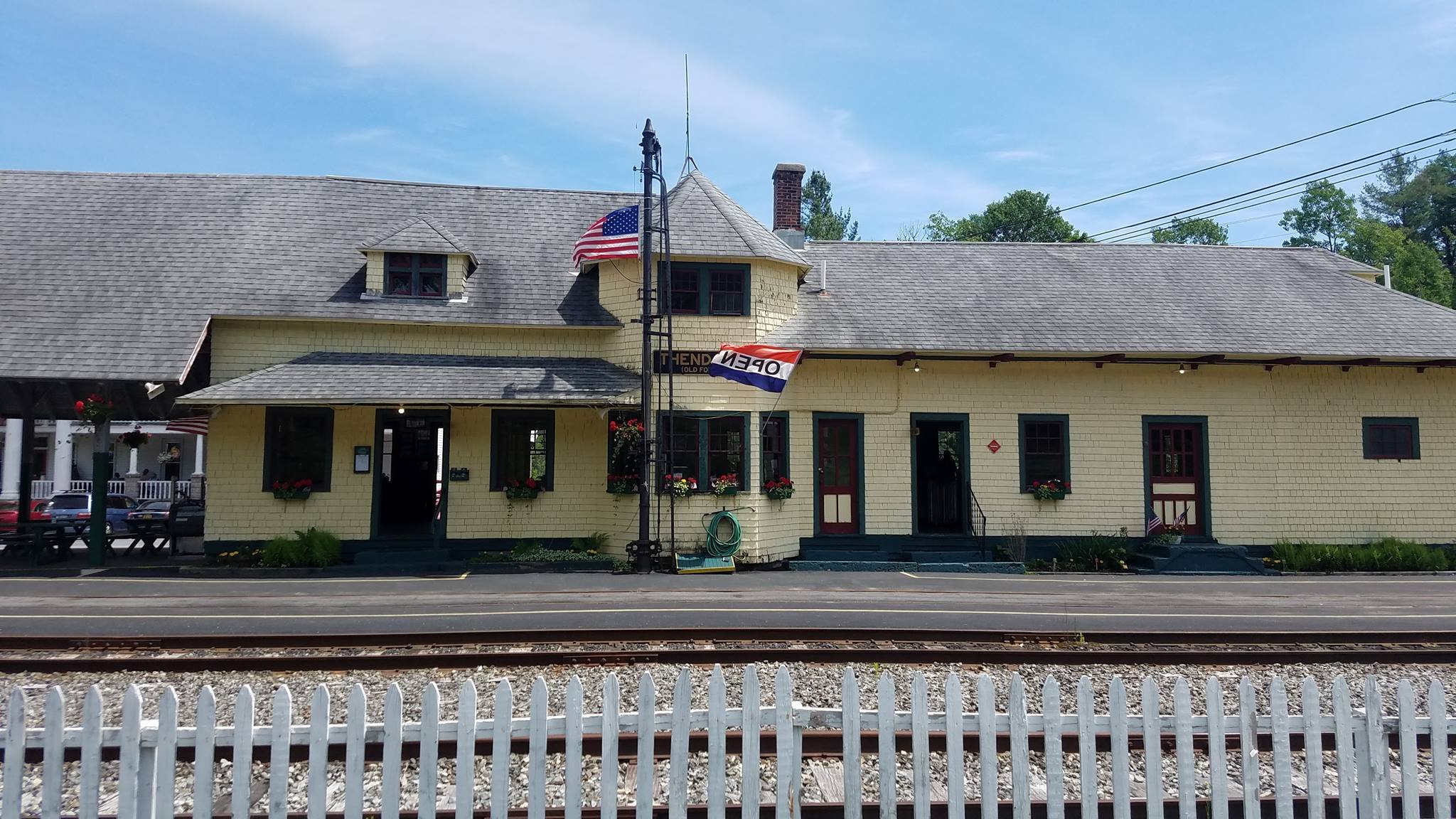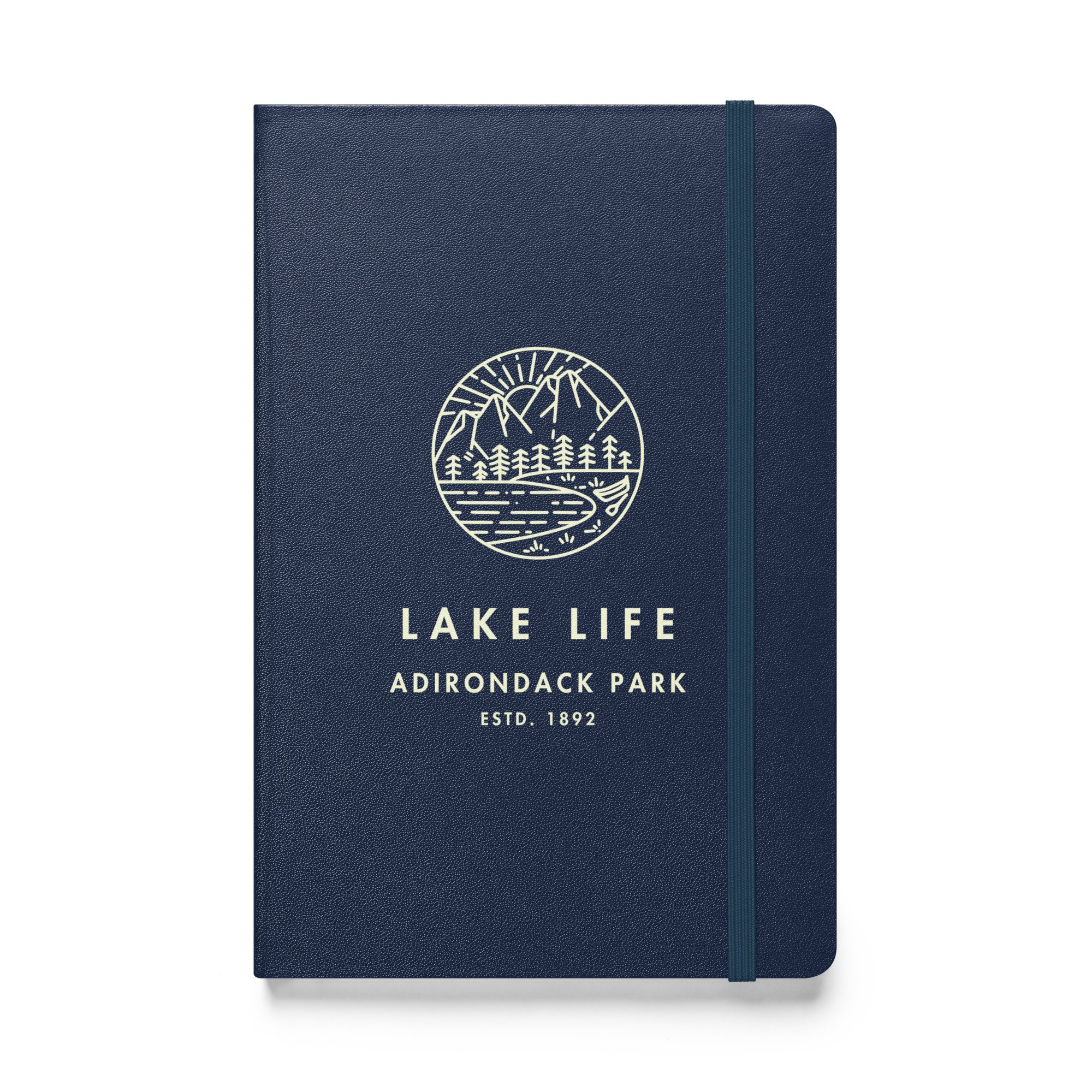Where in the Adirondacks? A Stop on the Adirondack Railway
Play our virtual scavenger hunt.
Do you know this place in the Adirondacks? Photo courtesy: David Patterson
Note: this challenge is complete. Did you guess correctly? Review the clues again, and scroll down to see the correct answer and the contest winner.
We're back for another edition of "Where in the ADK?". Did you guess last week’s puzzle correctly? We had an enthusiastic response to the challenge. Find the solution here and the prize winner(s).
This week’s “Where in the ADK?” contest takes us to the western edge of the Central Adirondacks, near Old Forge, NY, to visit another Adirondack historic landmark.
Based on the picture above, do you know where in the ADK? Name this place in the Adirondack Park in New York State to win this week's virtual scavenger hunt.
A railroad built to meet the demands of industry and high-end leisure in the Adirondacks.
From the mid-1850s through the Gilded Age, the Adirondacks experienced a massive influx of people. 19th-century industrial leaders, loggers, trappers, and hunters felt pressure to utilize the region's natural resources to feed the growing US Industrial Revolution.
In addition, many wealthy families constructed estates in the Adirondacks, today known as the “Great Camps,” for recreational purposes. Remember, the term “vacation” was coined in the Adirondacks.
Roads for horse-drawn wagons and coaches were challenging to build through the heavily wooded and mountainous Adirondack terrain. They were not practical for transporting large quantities of lumber and goods, not to mention rich people. Wealthy families and affluent vacationers demanded a higher class of transportation than a rough wagon ride.
Do you know the name of this historic train station? Enter to win this week’s contest.
Dr. William Seward Webb's railroad.
In 1890, Dr. William Seward Webb financed a railroad into the Adirondack wilderness to access his large hunting preserve, NeHaSane, which comprised 200,000 acres in the Northern Adirondacks. (Sidebar: Webb also owned and built Shelburne Farms – now the famous Shelburne Museum in Burlington, VT.) His plans for the land included the construction of the first railroad through the Adirondack Mountains from New York City to Montreal, Quebec.
Work on Dr. Webb’s railroad line started the next year and concluded in just 18 months. The rail line was a significant engineering feat for its day.
It’s also important to acknowledge that Webb accomplished this by using Polish and Irish immigrants, French Canadians, St. Regis Indians, and a workforce of one hundred Black laborers from Alabama and Tennessee. Being familiar with the harsh, sub-zero winter temperatures and nasty Adirondack black flies and punkies in the summer, local residents wanted nothing to do with the construction project.
Widespread controversy arose, and claims of “Adirondack Slavery” were charged when the mistreatment of workers was reported. Some observers witnessed African Americans with frozen feet crying out in anguish while being transported to the work sites in open sleighs. Another report claimed, “There’s a Negro buried under every tie of Dr. Webb’s Railroad.”
A station on a historic Adirondack thoroughfare.
Eventually, the line included 17 bridges over several bodies of water and many buildings constructed along the passageway to support rail operations in New York. Many of these are still standing or in use today, like the destination in this week’s scavenger hunt.
In addition to the Webb family, the Morgan, Vanderbilt, Whitney, and Roosevelt families and other not-so-famous but very prosperous clans used the rail passage to get to their Great Camps. The railroad later became part of the New York Central System, which operated from the Great Lakes through the Mid-Atlantic regions of the United States.
Photo courtesy Goodsell Museum
During its heyday, this depot bustled with activity, welcoming New York State travelers from far and wide who sought to escape the hustle and bustle of city life and immerse themselves in the pristine wilderness of the Adirondack Mountains to enjoy an array of outdoor adventures.
Creating a winter-time surge in visitors.
Looking to draw more visitors to the area beyond the summer season, local citizens were inspired by the rising interest in skiing and other winter activities and the publicity afforded to the Adirondacks by the 1932 Olympics.
Photo courtesy Goodsell Museum
A group of business leaders formed the Old Forge Winter Sports Association in 1935, a not-for-profit group comprised entirely of volunteers. The goal was to find a way to draw visitors to the area during the winter months on the then-popular “snow train” concept.
The community decided to promote itself as a winter recreation destination for ski and winter sports enthusiasts by advertising in city newspapers, including the New York Times. They were hoping to attract a few dozen visitors, but they were surprised when the first scheduled train arrived on Sunday, January 19, 1936; to the organizers' amazement, over 900 people disembarked from the train.
Arrival of the newest addition to the Adirondack snow trains.
Snow trains were a popular means of transportation until the outbreak of World War II when they were suspended. However, they resumed in 1946 and continued to run until 1954, along with the increasing use of personal automobiles in the United States. The establishment of McCauley Ski Center was an added draw for the area.
Demise and rebirth of an Adirondack railway and a historic depot.
However, by 1961, with the proliferation of automotive transport, the heyday of rail travel was over in the Northeast. Travelers and businesses abandoned part of the line from Lake Clear Junction to Malone.
Scheduled passenger service on the Adirondack Division from Utica to Lake Placid ended by April 1965. By 1972, just 80 years after rail service began, all commercial operations ceased. In 1975, New York State purchased the abandoned line.
In the early 1990s, the Adirondack Scenic Railroad, a nonprofit organization dedicated to preserving the region's railway heritage, took over ownership of this depot and began restoration efforts. In 1992, they ran their first tourist train out of this station.
Adirondack Scenic Railroad Train arriving at the station.
The response was tremendous. By the end of the first season the railroad carried over 55,000 passengers. With such a positive response from the public, New York State allowed the railroad to operate in 1993, distinguishing the entire rail line from Remsen to Lake Placid as part of the National Register of Historic Places and the New York State Register of Historic Places.
In July 1994, the Adirondack Centennial Railroad became the Adirondack Railroad, operated by the Adirondack Railway Preservation Society, Inc. (ARPS). ARPS is a 501(c) (3) not-for-profit corporation and is run by a staff of 150 volunteers and a few full and part-time employees.
Clues to help you solve the puzzle.
Initially built in 1892, this depot was a vital hub for transporting passengers, goods, and resources to and from the Adirondacks.
Today, the Adirondack Scenic Railroad operates excursion trains that depart from this depot, offering passengers a scenic journey through the breathtaking landscapes of the Adirondack Mountains.
This train station is the Adirondack Scenic Railroad's longest-duration northern terminus, just two miles from Old Forge, NY.
Trains arriving and departing the station operate seasonally, from May to mid-October.
In the Winter, after trains stop running in October, the right-of-way is used as a significant snowmobile trail.
Do you know this historic spot in the Adirondacks?
Congratulations to Heather E. from Scotia, NY, who had this week’s winning submission. She correctly identified the Thendara Train Station.
Heather will receive our popular Adirondack Park 20 oz Stainless Steel Tumbler (retail value $27.50).
The tumbler is perfect for your favorite hot or cold beverage on your next road trip, camping expedition or boat ride. Its spill-resistant design helps you leave no trace.
Only submissions made through this form are eligible to win.
Play 'Where in the ADK?' today!
ADK Taste highlights intriguing and historic sites in the Adirondack Park.
We identify and spotlight places that are national historic landmarks or may be hidden gems or not on the radar of typical travel guides.
We love places that embody the character and distinct charm of the six-million-acre Adirondack region in upstate New York.
See official rules below.
Show off your love for the Adirondacks.
Upcoming events in the Central Adirondacks.
Complete 'Where in the ADK?' Official Rules
May 1, 2024
Entries should be submitted through the puzzle submission form on the adktaste.com website. Please fill out all fields to include your name, e-mail address, and the “Where in the ADK?" (WITA) answer.No purchase is required.
Entry deadline: Entries must be received by ADK Taste by Sunday midnight following the posting of the week's WITA challenge on Facebook, Instagram and our website.
Eligibility restrictions: One entry per person. Employees of ADK Taste are not eligible to participate. You must be 13 or older to participate and must have the consent of a parent or legal guardian if you are under 18. Void where prohibited or restricted by law. ADK Taste is not responsible for incomplete, lost, stolen, illegible, misdirected or late entries.
Selection of the Winner: The winner will be selected in a random drawing from all eligible entries that contain a correct answer to the week's WITA challenge. We will notify the winner by email. Winners can then provide their mailing address to receive the WITA Challenge Prize..
Prize: The winner will receive the ADK Taste Adirondack Park Stainless Steel Tumbler. (Total estimated retail value $27.50)
Reservations; Ownership of Entries: All entries become the property of ADK Taste. Each contest entrant consents to the use of his or her name and WITA Challenge answers, or any portion thereof, in connection with the Challenge in any and all media and manner, now or hereafter known, in perpetuity without compensation. ADK Taste is not responsible for any damages or losses relating to the Challenge or acceptance/use of any prize.








































